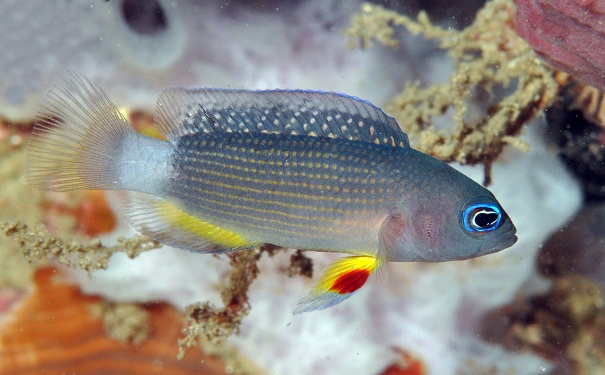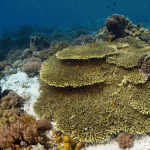
Manonichthys (juvenile dottyback), one of the potentially new species identified in Bali. Image: Conservation International/Gerald Allen.
Two new dottybacks have been identified among the finds by a researcher from the University of Sydney.
A two week survey of the reefs around Indonesia, conducted by scientists with Conservation International (CI), has led to the discovery of nine potentially new species in the waters around Bali Island.
The new species included two varieties of dottybacks, which have been examined by the Macleay Museum’s Natural History curator Dr Anthony Gill. CI researchers Drs Mark Erdmann and Gerry Allen sent him emails of their finds between dives, allowing him to examine the specimens without putting on a wetsuit.
Dr Gill compared the specimens with known species to determine if it was a new discovery. He often relies on physical characteristics, such as colouration and bone structure, to determine if the specimen is a new species, rather than using genetic material.
“The reason most of my studies- indeed most taxonomic studies- are based essentially in morphology that we lack the same sort of understanding of genetic characters. If we look at the dottybacks, for example, we have no information for the vast bulk of the species.
“Moreover, we may never be able to extract the genetic information from the type specimens.”
The dottyback descriptions have been sent to a peer review journal to be confirmed. If they are, they will take the current number of dottyback species to 148.
The other potentially new species noted are two types of cardinal fish, a fang blenny, a garden eel, a sand perch, a species of goby and a previously unknown Euphyllia bubble coral. Coral reefs have the highest biodiversity among marine habitats, but the discovery of these new species confirms that Indonesia and the Philippines are a hotspot for marine diversity.
“The area bounded by the Philippines and Indonesia east to the Solomon Islands is exceptional, and has the highest biodiversity among coral reefs. The area is sometimes referred to as the “˜coral triangle’.”
But changes in the area may mean that many of the species here will remain a mystery. Dr Gill says “climate change is already having an effect on coral reefs- for example; elevated sea temperatures have lead to coral bleaching. But there are other human-based impacts, including dynamiting of reefs, cyanide fishing, overfishing, pollution, increased river runoff leading to siltation, etc.”






